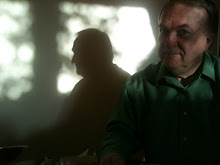Riverside, California is my home town, and also home to the TownHouse Garden. Citrus was introduced to California through the Spanish missio...
Riverside, California is my home town, and also home to the TownHouse Garden. Citrus was introduced to California through the Spanish missions of the 1600s. Trees were planted from seeds and you were not sure what you would get due to cross fertilization. In the late 1800s a resident named Eliza Tibbets received two interesting trees from the US Department of Agriculture to see if they would grow in Southern California's Mediterranean climate. Grow they did! They were Navel Oranges. Seedless, sweet, and juicy, Navel oranges in California are cuttings from those original trees. That meant that all of the fruit was the same. The combination of fruit, water, railroads, and demand created the second California "gold" rush. Within twenty years, Riverside boasted the highest per capita income in the US. It, and the surrounding cities, were called the Inland Empire, a moniker that still exists today.
In the 1970s, the city debated whether to stay a green city surrounded by citrus, or grow houses instead. The property developers won. Truth be told, I probably live in one of those developments.
You can still see the previous glory the Inland Empire; the mansions on Victoria Avenue, the USDA's citrus experiment station (now UC Riverside), the period piece Mission Inn, and the California Citrus Museum.
 |
| An interesting article by Deb Fallows* in the Atlantic on Eliza Tibbets can be found here. |
Today, the orange industry in the US is in trouble. In some places, 70% of the orange trees have been destroyed. There is a citrus pandemic. A bacterial infection causes a condition called "citrus greening". It is spread from tree to tree by the Asian citrus psyllid, a plant sucking insect. The disease is incurable and trees produce bitter fruits. The infected trees die young, a 7-10 year life expectancy compared to the usual 50+ years.
One preventative solution is to wear a mask, er, I mean put a tent over the tree to keep the Asian citrus psyllids off the tree. This is what the city of Riverside did for the original parent navel orange tree:
 |
| March 31, 2021 |
Maybe some day the plaque at the Parent Navel Orange will read, "This is the last remaining orange tree in the United States.
Besides covering the trees, another experimental method is the use of antibiotics on the trees to kill the bacterium.
Inspection of trees is another method used to prevent the spread of the disease. I was surprised one day to get a knock on the door from California agriculture inspectors wishing to examine the citrus in my small yard. I had a similar job in the 1970s inspected backyards for chickens and then inoculating them against avian Newcastle disease. These citrus inspectors quickly zeroed in on my Seville orange near the front door. They found psyllids and collected them for analysis in the lab. I asked what would happen if they got a "positive" result for the citrus greening. They said another team would come to the house, dig up all of the citrus, and quarantine the surrounding area.
They never came back, so I guess our psyllids were disease free. But the experience got me looking at ways to help keep the pests off of the citrus.
I am not a big fan of chemical warfare in the garden. Though my entomology research days were in the toxicology and physiology department, I felt my studies of pheromones were more eco-friendly than the nerve agents deployed elsewhere.
Rather than spraying citrus, I try to encourage the good insects that prey on citrus pests.
Managing insects is a competition.
There is you, the gardener on one side. You might live in, or near an eco-diverse biome with lots of garden friendly predatory insects, and/or you buy predators like lacewings, ladybirds, and praying mantis to disperse in the garden. These insects will save the garden.
On the other side are ants. Some species of ants will "farm" your garden. They will protect plant sucking pests such as aphids, scales, and psyllids. In exchange for this protection, the ants collect the fecal droppings, or "honey dew" from the pests. The honey dew is rich in sugar and the ants will fill their abdomens, return to the nest and share the gift from the pests with the colony.
If you eliminate the ants from the equation, the pest insects become fair game for the predators. Predators win!
Here's a video of how I protect my citrus from the ants (and plant suckers) at the TownHouse Gardens.
- I identified the scale as black scale due to the "H" shape on the top of the scale. Could also be the more common red scale.
- The vinyl tape and tangle foot are available on Amazon







COMMENTS